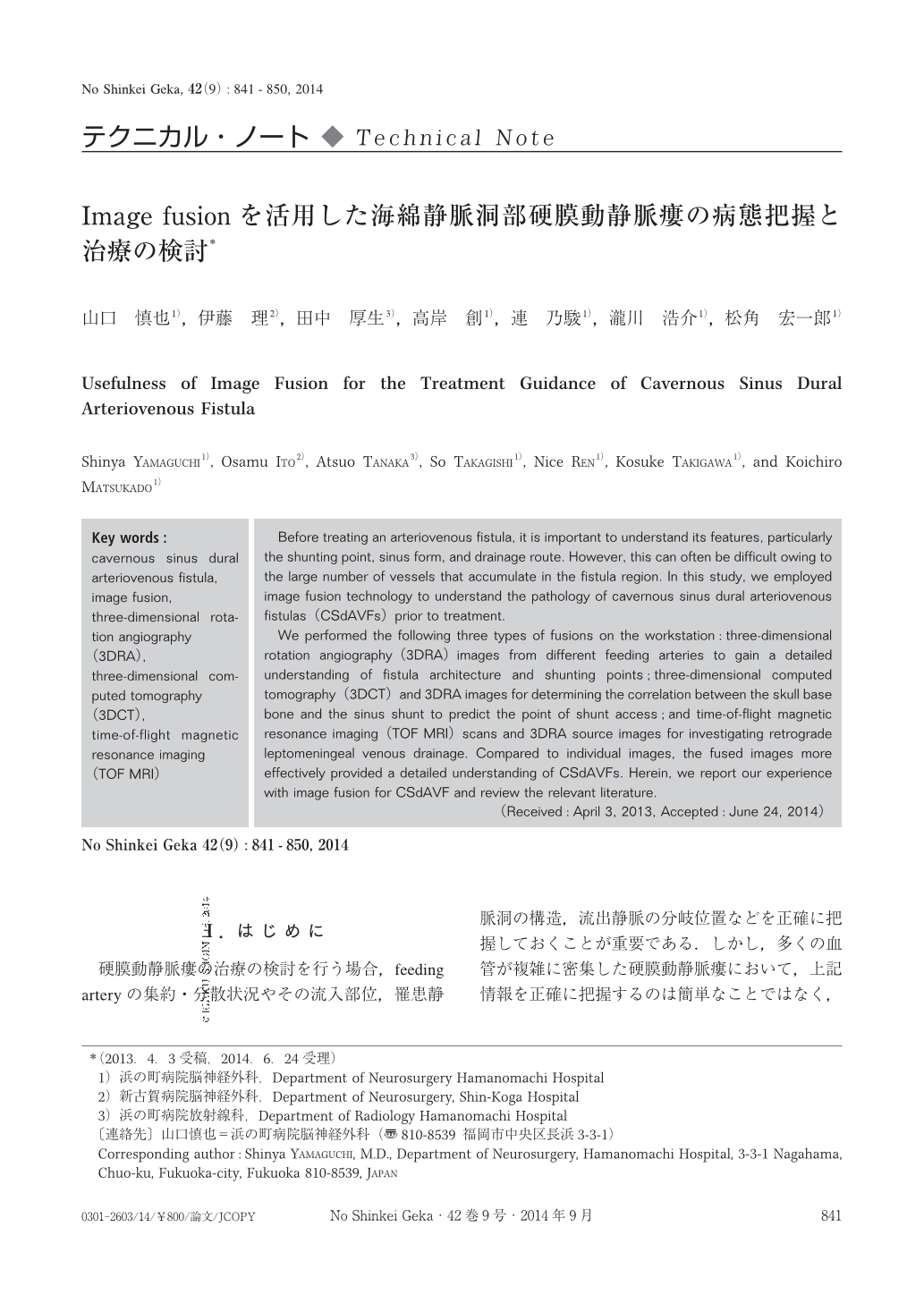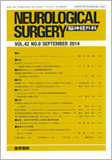Japanese
English
- 有料閲覧
- Abstract 文献概要
- 1ページ目 Look Inside
- 参考文献 Reference
Ⅰ.はじめに
硬膜動静脈瘻の治療の検討を行う場合,feeding arteryの集約・分散状況やその流入部位,罹患静脈洞の構造,流出静脈の分岐位置などを正確に把握しておくことが重要である.しかし,多くの血管が複雑に密集した硬膜動静脈瘻において,上記情報を正確に把握するのは簡単なことではなく,時間と熟練を要する.
近年,脳神経外科疾患手術の術前検討の際に,workstation上でcomputed tomography(CT),magnetic resonance imaging(MRI),血管造影などのimageをfusionし,手術の術前シミュレーションが行えるようになってきている2,4,6,7,9-11).特に頭蓋底脳腫瘍や動静脈奇形(arteriovenous malformation:AVM)などに関しては,病変と周囲血管や骨,脳・神経との関係が治療前に解析でき,手術の安全性が高まると考えられる.
今回われわれは,海綿静脈洞部硬膜動静脈瘻(cavernous sinus dural arteriovenous fistula:CSdAVF)に対し,image fusionを活用してその病態把握と加療の検討を行った.その有用性を報告する.
Before treating an arteriovenous fistula, it is important to understand its features, particularly the shunting point, sinus form, and drainage route. However, this can often be difficult owing to the large number of vessels that accumulate in the fistula region. In this study, we employed image fusion technology to understand the pathology of cavernous sinus dural arteriovenous fistulas(CSdAVFs)prior to treatment.
We performed the following three types of fusions on the workstation:three-dimensional rotation angiography(3DRA)images from different feeding arteries to gain a detailed understanding of fistula architecture and shunting points;three-dimensional computed tomography(3DCT)and 3DRA images for determining the correlation between the skull base bone and the sinus shunt to predict the point of shunt access;and time-of-flight magnetic resonance imaging(TOF MRI)scans and 3DRA source images for investigating retrograde leptomeningeal venous drainage. Compared to individual images, the fused images more effectively provided a detailed understanding of CSdAVFs. Herein, we report our experience with image fusion for CSdAVF and review the relevant literature.

Copyright © 2014, Igaku-Shoin Ltd. All rights reserved.


